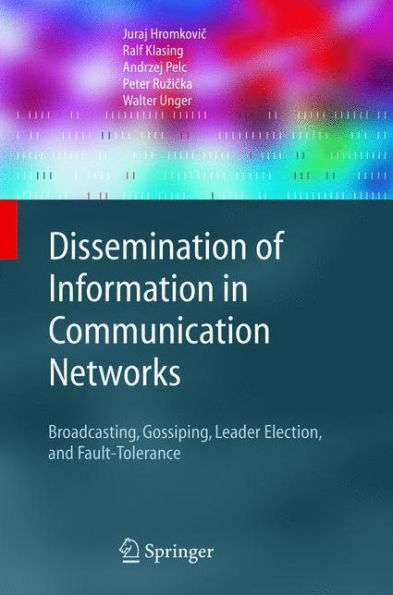5
1
9783642056482



Dissemination of Information in Communication Networks: Broadcasting, Gossiping, Leader Election, and Fault-Tolerance / Edition 1 available in Hardcover, Paperback

Dissemination of Information in Communication Networks: Broadcasting, Gossiping, Leader Election, and Fault-Tolerance / Edition 1
- ISBN-10:
- 3642056482
- ISBN-13:
- 9783642056482
- Pub. Date:
- 12/14/2010
- Publisher:
- Springer Berlin Heidelberg
- ISBN-10:
- 3642056482
- ISBN-13:
- 9783642056482
- Pub. Date:
- 12/14/2010
- Publisher:
- Springer Berlin Heidelberg

Dissemination of Information in Communication Networks: Broadcasting, Gossiping, Leader Election, and Fault-Tolerance / Edition 1
$54.99
Current price is , Original price is $54.99. You
54.99
In Stock

Product Details
| ISBN-13: | 9783642056482 |
|---|---|
| Publisher: | Springer Berlin Heidelberg |
| Publication date: | 12/14/2010 |
| Series: | Texts in Theoretical Computer Science. An EATCS Series |
| Edition description: | Softcover reprint of hardcover 1st ed. 2005 |
| Pages: | 364 |
| Product dimensions: | 6.10(w) x 9.25(h) x 0.36(d) |
From the B&N Reads Blog
